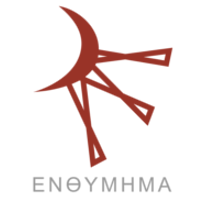Una Coppia di Primedonne
DOI:
https://doi.org/10.13130/2037-2426/10615Parole chiave:
Schiller, Brecht, performativoAbstract
Oggetto è la traduzione (finora inedita) della riscrittura che Brecht aveva compiuto ispirandosi a una famosa scena schilleriana (III,4) dalla Maria Stuarda: l'incontro-scontro tra regine. Lo studio si concentra dapprima sull'opera, presentandola, e quindi sulla scena di Schiller, analizzandola, perché Brecht dimostra di seguire ogni minima svolta drammatica e mutazione stilistica; per poi reinterpretarla perseguendo un intento ben preciso e pervenendo a un esito sorprendente. Esito che getta una luce nuova su Brecht, evidenziando la metamorfosi che il testo subisce e che, grazie alla traduzione, aumenta le proprie potenzialità performative.
We discuss Brecht’s adaptation of the famous Schiller’s scene on the encounter and subsequent clash between the two Queens, Maria and Elisabeth. Its Italian translation (up to now unpublished) is hereby proposed. We first offer an overview of Schiller’s play Maria Stuart and an in-depth discussion of its crucial scene. In its adaptation Brecht follows every dramatic and stylistic twist, re-writing the scene with a specific purpose. The outcome is surprising and allows us to see Brecht in a whole new light: the master of text-based dramaturgy can actually be compared to specific trends of postmodernity.
Riferimenti bibliografici
Brecht, Bertolt. Diario di lavoro, a cura di Werner Hecht, trad. Bianca Zagari, Einaudi, 1976.
---. “Übungsstücke für Schauspieler. Parallelszenen.” Gesammelte Werke, vol. VII, Suhrkamp, 1967, pp. 3001-13.
Bucciantini, Massimo. Un Galileo a Milano. Einaudi, 2017.
Cascetta, Annamaria. “Introduction to the Theatre towards Performance.” Comunicazioni Sociali, vol. 36, no. 1, 2014, pp. 5-12.
Cases, Cesare. Introduzione. Teoria del dramma moderno (1880-1950), di Peter Szondi, trad. Cesare Cases, Einaudi, 1962, pp. VII-XXXVI.
Crescenzi, Luca. Introduzione. Maria Stuart, di Friedrich Schiller, trad. Luca Crescenzi, Mondadori, 1994, pp. V-XVII.
Fischer-Lichte, Erika. Estetica del performativo. Una teoria del teatro e dell’arte, a cura di Tancredi Gusman, trad. Tancredi Gusman e Simona Paparelli, Carocci, 2014.
Groppali, Enrico. Introduzione. Die Räuber, Don Carlos, Maria Stuart, di Friedrich Schiller, trad. Enrico Groppali, Garzanti, 1991, pp. VII-XXIII.
Guccini, Gerardo. “Lehmann e l’Italia.” Il teatro postdrammatico, di Hans-Thies Lehmann, trad. Sonia Antinori, Cue Press, 2017, pp. 226-34.
Hermann, Hans-Peter. Friedrich Schiller: Maria Stuart. Diesterweg, 1989.
Klotz, Volker. Geschlossene und offene Form im Drama. Hanser, 1969.
Lehmann, Hans-Thies. “Un incontro. Discussione sul teatro popolare, l’iper-regia, il chortheater, Brecht, Crimp, Kane, l’attore e il post-postdrammatico.” Prove di drammaturgia, vol. 15, no. 1, 2010, pp. 8-11.
---. Il teatro postdrammatico. Cue Press, 2017.
Ponti, Maria Donatella. Nota introduttiva. Maria Stuart, di Friedrich Schiller, trad. Maria Donatella Ponti, Einaudi, 1969, pp. V-VII.
Sautermeister, Gert. “Maria Stuart. Ästhetik, Seelenkunde, historisch-gesellschaftlicher Ort.” Schillers Dramen. Neue Interpretationen, a cura di Walter Hinderer, Reclam, 1979, pp. 124-216.
Schiller, Friedrich. Nationalausgabe der Werke und Briefe, vol. XXV, Hermann Böhlau Nachfolger, 1941.
Szondi, Peter. Teoria del dramma moderno (1880-1950), trad. Cesare Cases, Einaudi, 1962.
Tierno, Pino. “Il sogno (o l’incubo) del traduttore: servo di scena o autore-ombra?” Hystrio, vol. 28, no. 4, 2016, pp. 14-15.
Dowloads
Pubblicato
Come citare
Fascicolo
Sezione
Licenza

Except where otherwise noted, the content of this site is licensed under a Creative Commons Attribution 4.0 Unported License.
Accettato 2018-09-29
Pubblicato 2018-12-23





